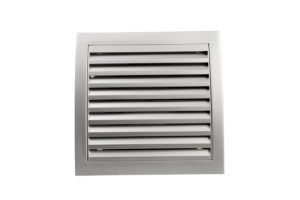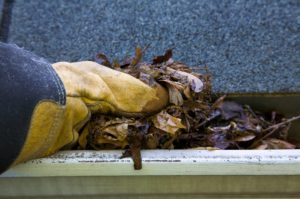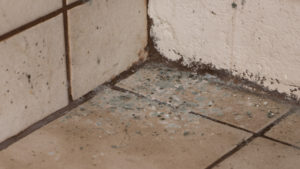Keeping Your Home Dry — How Water Enters Your Home
go.ncsu.edu/readext?526635
en Español / em Português
El inglés es el idioma de control de esta página. En la medida en que haya algún conflicto entre la traducción al inglés y la traducción, el inglés prevalece.
Al hacer clic en el enlace de traducción se activa un servicio de traducción gratuito para convertir la página al español. Al igual que con cualquier traducción por Internet, la conversión no es sensible al contexto y puede que no traduzca el texto en su significado original. NC State Extension no garantiza la exactitud del texto traducido. Por favor, tenga en cuenta que algunas aplicaciones y/o servicios pueden no funcionar como se espera cuando se traducen.
Português
Inglês é o idioma de controle desta página. Na medida que haja algum conflito entre o texto original em Inglês e a tradução, o Inglês prevalece.
Ao clicar no link de tradução, um serviço gratuito de tradução será ativado para converter a página para o Português. Como em qualquer tradução pela internet, a conversão não é sensivel ao contexto e pode não ocorrer a tradução para o significado orginal. O serviço de Extensão da Carolina do Norte (NC State Extension) não garante a exatidão do texto traduzido. Por favor, observe que algumas funções ou serviços podem não funcionar como esperado após a tradução.
English
English is the controlling language of this page. To the extent there is any conflict between the English text and the translation, English controls.
Clicking on the translation link activates a free translation service to convert the page to Spanish. As with any Internet translation, the conversion is not context-sensitive and may not translate the text to its original meaning. NC State Extension does not guarantee the accuracy of the translated text. Please note that some applications and/or services may not function as expected when translated.
Collapse ▲One of the key principles to a healthy home is keeping the home dry. In order to do this, we must know how water enters our home. Water enters from three basic sources: use sources, maintenance sources, and construction sources. Read on to learn more.
Use Sources. From the activities of the people living in the home.
People breathe, shower, and cook in homes. This all creates moisture within the home, usually in the form of water vapor. We also pipe water directly into our homes for drinking, cleaning, and bathing. While most of that water is directed back out of the home via drains and drain pipes to either private septic systems or municipal water treatment plants, a certain amount enters the air of the home in the form of water vapor.
- A typical person generates about 3 pints of water per day just from breathing.
- Cooking produces about 1 pint of water per meal.
- A 5-minute shower creates ½ pint of water.
- Five to seven houseplants create about 1 pint per day.
We cannot stop moisture from these sources. But, we can control it and use ventilation to get water vapor out of our house before it has a chance to condense on surfaces and cause a moisture problem.
Other ways occupants may introduce water into their homes:
- An unvented kerosene space heater generates 3.8 quarts of water for every gallon of kerosene burned.
- If a large amount of firewood is brought indoors, before it has seasoned, it will generate tremendous amounts of water in the home. One cord of green wood can generate over 50 gallons of water as it dries out.
Controlling Water and Moisture at its Source:
- Make certain your clothes dryer is exhausted outdoors.
- Run a bathroom exhaust fan when bathing or showering and for a few minutes after to vent all moisture outside. A crank timer fan s
 witch is an easy way to accomplish this and can be easily installed by an electrician.
witch is an easy way to accomplish this and can be easily installed by an electrician. - Use a kitchen range exhaust fan that is ducted to the outdoors when cooking.
- Do not use unvented heating appliances such as portable kerosene heaters or gas heaters or fireplaces. They produce tremendous amounts of water vapor during the combustion process.
- Do not store large amounts of firewood indoors.
- Monitor indoor relative humidity levels with a hygrometer. In cold climates the recommended indoor humidity level is between 35 and 55%.
- If relative humidity is significantly higher during the heating season, this indicates a source of moisture in the home, or that the house does not have enough ventilation. If a careful inspection of the home does not indicate a specific moisture source, such as a plumbing leak or use of an unvented combustion appliance, then improper ventilation may be the issue.
Maintenance Sources. Maintenance related sources are another cause of moisture in a home. Leaks in water pipes, even very tiny drips that are ignored or undetected, will eventually lead to a moisture problem in the home. Some other examples of water and moisture getting into homes due to lack of maintenance are leaks in a roof that need to be repaired or replaced. Dryer vents that have become disconnected are another example. A disconnected dryer vent allows water-saturated air from the dryer directly into the house.
Follow the maintenance tips listed below to help you keep your house dry.
- If your basement or crawl space has a dirt floor, cover it with a sheet of plastic to help keep ground moisture out of the building.
- Get plumbing and roof leaks repaired right away.
- Check your clothes dryer vent pipe regularly to be certain it is not plugged with lint and that it has not become disconnected.
- Inspect your rain gutters and downspouts annually to make certain all joints are connected and that they are not plugged.

- Periodically have the gutters cleaned of leaves and other debris
- Be certain that window air conditioners are pitched away from the building and that condensation drains are not plugged to direct condensate to the outside.
- Check to see if your refrigerator has a drip pan that catches condensation from the coils. If it does, you should empty the drip pan regularly and replace it if it develops a leak.
Another part of good maintenance practice in keeping your home dry is to be vigilant to any sources of moisture or water seepage into the walls of your home. At least once a year conduct a careful inspection of your homes’ walls, both inside and out. Look for any evidence of water intrusion and pay special attention to areas around windows and doors. Water stains or peeling paint in an isolated spot on exterior walls may indicate a leak. Peeling paint or spongy wall board on interior walls also indicate a leak. If a leak is suspected, it may be necessary to remove a few pieces of siding to know for sure.
Construction Sources. Construction related moisture and water intrusion is the third source of excess moisture in homes. Basically, this is about how well the home was built. If the builder did a good job of building the house, then the basement or crawlspace always remains dry, even at extra wet times of the year such as the spring when snow melts. If the builder also installed the roof, windows and doors with correctly detailed flashing, and a drainage plane (felt paper or house wrap) between the exterior siding and the wall sheathing, then no water will be able to get inside the walls during heavy rain storms when wind driven rainwater can get pushed behind the siding.
The first two sources of moisture, those related to use of the home by its occupants and those related to maintenance, are usually fairly simple and inexpensive to control or fix. Unless the home has been recently constructed and covered by some type of builder warranty, homeowners are almost always stuck with the cost of fixing construction-related moisture problems. Perhaps the best way to avoid this problem is to never to buy a home with any construction-related moisture problems. If you are a tenant, then it is the responsibility of the landlord to fix any construction-related moisture problems.
A wet basement or crawl space can be responsible for conducting several gallons of water into the living areas of a home each day. Improper grading around the house foundation and failure to follow good construction practices when building the home’s foundation are the primary causes of wet basements and crawl spaces. Fixing a wet basement can be as simple as repairing rain troughs and gutters so that rain water gets conducted away from the house. But, for basements that were not constructed properly, the fix is usually more complex and expensive. There are firms that specialize in repairing wet basements.
Another common moisture problem in homes related to poor construction practice is seepage of rain water directly into the walls because of improper flashing at door and window penetrations. Sometimes leaks are not apparent until rot becomes evident on interior or exterior surfaces. Good maintenance includes regular inspections of the interior and exterior areas of your home to look for signs of water getting into the walls.
Source: Extension Healthy Homes



